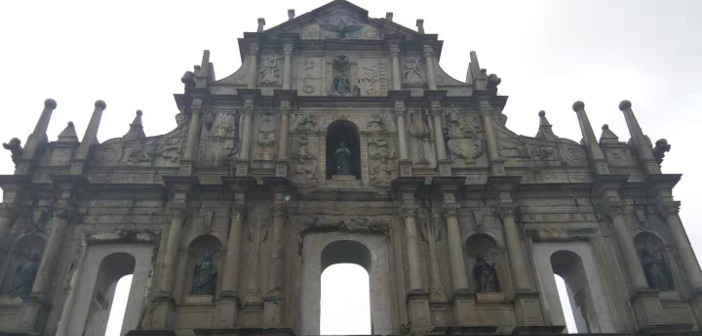As I wrote in my last post, our trip to Macau was a last minute thing, and as a result we didn’t check the weather. As I was about to leave the house I opened the cupboard, looked at my raincoat, thought “Nah!” and headed for the airport. What I had forgotten was that though late July is the height of summer in Macau, it’s also the typhoon season.
After our first day was spent returning to the mainland for money and coming back again, we were looking forward to escaping the clanging, garish inferno of the Cotai casinos and seeing some of the historic sights. Macau was taken over by Portuguese traders in 1557, and has a rich legacy of colonial architecture, which unlike that of (for example) Manila, was left relatively unscathed by the tumult of the 20th century.
We began our exploration at the Guia Fortress and lighthouse. Anything military is bound to enthuse my children more than another temple or museum, and we were particularly fascinated by the typhoon warning system still in use there. Various shapes constructed of metal strips are suspended from a mast-like structure, and can be seen across the whole peninsula. The “T” shape indicating a level 3 typhoon was missing, and we later realized it was hanging outside.

Typhoon warning signals at Guia Lighthouse. Where’s the level 3 signal?
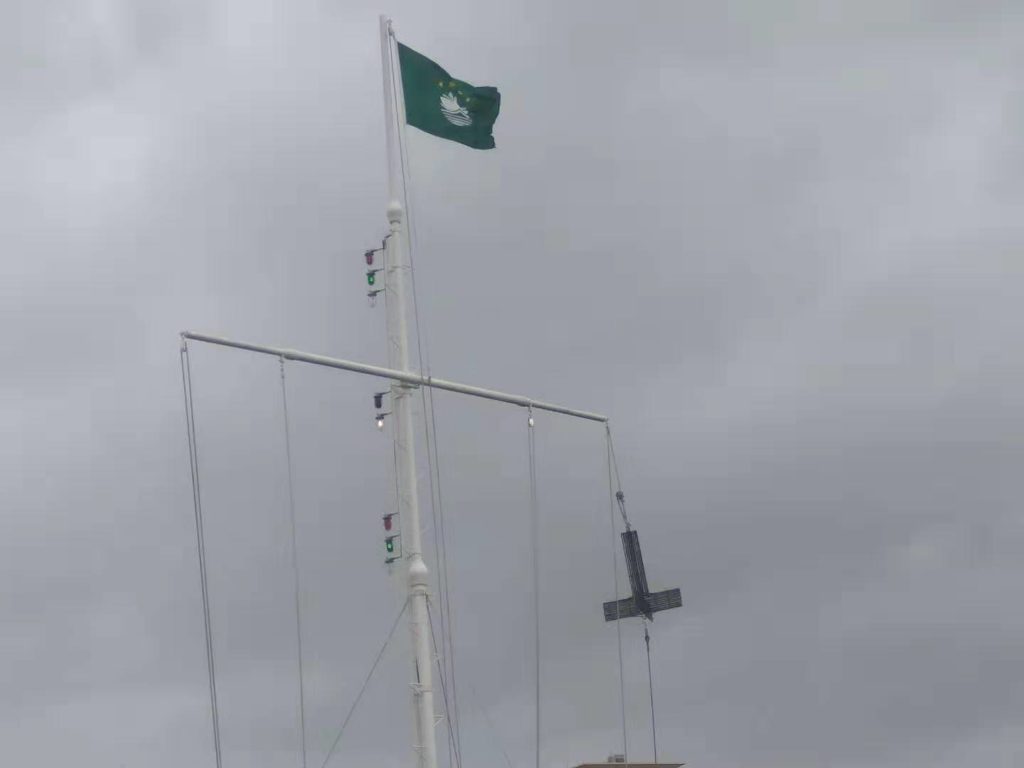
Oh look, there it is.
“Does that mean there’s going to be a typhoon?” my son asked me.
“Only level 3,” I said. “It’s only when they get to level 8 that you have to worry.”
Words that were to come back to haunt me.
Our next stop was the Tap Seac Art Gallery. At the time of our visit it was hosting the Japanese contribution to the Macau international art exhibition. We asked the guard where the other galleries were.
“All across the city,” he said, “but maybe you don’t know there’s a typhoon coming? Very serious, level 8. As soon as you’ve gone I’m going to start barricading the gallery. You should get somewhere safe.”
We left the gallery to see the inverted T still visible on the hilltop, and no obvious signs of panic. I decided we would go to see the ruins of St. Paul’s, since we were so close. Only the facade of this 17th century cathedral still stands, but the extraordinary carvings by Japanese craftsmen make it the symbol of the city.
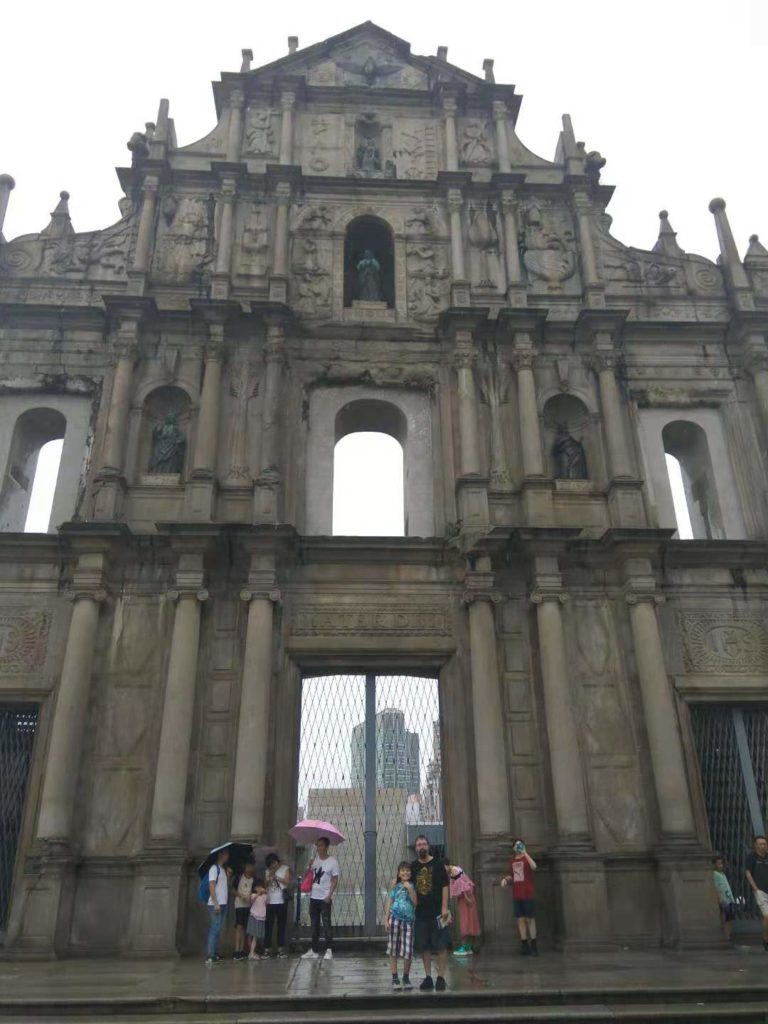
The facade of St. Paul’s, with the wind whipping up…
By this time though the wind was beginning to howl, and so were my increasingly anxious children. We walked down to the main road to see shopkeepers piling sandbags in the doorways and pulling down shutters. As we were staying in Coloane, we needed to cross the bridge to the island, or be stranded on the wrong side of the water. At the bus stops we encountered a chaotic crush, and in the confusion we got on the wrong bus, had to get off again, watched the bus direct to our hotel leave as it was too crowded to get on, and finally got one which at least took us to the nearby casino. We discovered later we were on one of the last buses to cross before the bridge was closed.
When we got off the bus though I decided that it was all a fuss over nothing, and instead of waiting for the bus to our hotel, I led the family into Studio City. This is yet another complex surrounding a casino, but promised amusements such as VR games and a trampoline park. So I gave the kids some money and they went off to discover that everything was closed because the staff had gone home early, while my wife and I enjoyed what might be the best cocktails we have ever sampled.
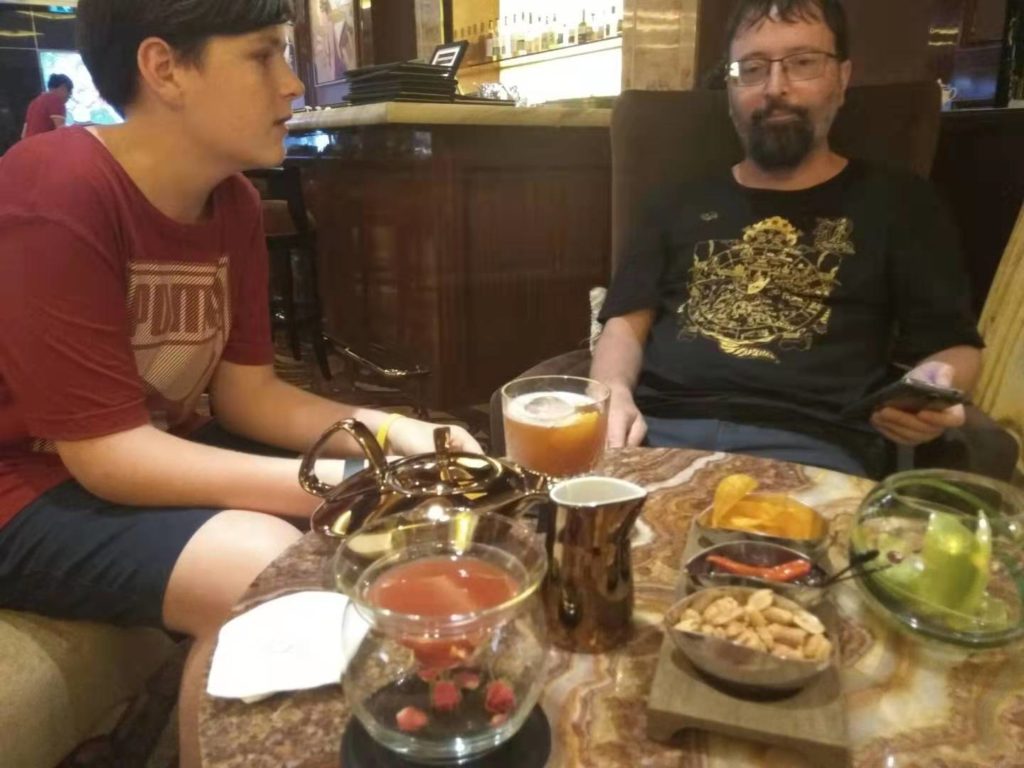
It was tough surviving the typhoon, but somehow we struggled through
Japanese art was to come to the boys’ rescue; a row of classic arcade games such as Space Invaders and Pacman formed part of a display of Japanese culture and was free to play. So we had quite a pleasant time of it, until we decided it was time to head back to the hotel. At this point I realized that neither the shuttle buses nor public buses were running, and that a huge and bad-tempered crowd had been waiting for a taxi for three hours.
An air of quiet desperation was settling over the casinos, as those who weren’t staying there slowly realized that they might be staying there after all. People wandered around aimlessly or started bedding down in corners. We were able to pass from one casino to another along covered walkways, but there was no way of traveling the three kilometers back to our hotel.
So I decided we were going to walk. It was crazy, but realistically neither the wind nor rain were particularly severe by this point, and we were picked up halfway by a driver who indignantly refused any payment for dropping us at our door. “It’s dangerous,” he said, simply.
I make light of all this, but of course I know typhoons are no laughing matter. I am glad for the people of Macau and the region that this storm passed relatively without incident, and nobody was seriously hurt in the city. We blundered through it cocooned in a bubble of luck, stupidity, and white privilege, and I would advise anyone else visiting to be more mindful of the warnings than we were.
There is much to enjoy in Macau for families. There are museums, churches, and parks… even a beach. So escape from the trap of the casinos and shopping malls, and get exploring. But stay safe.
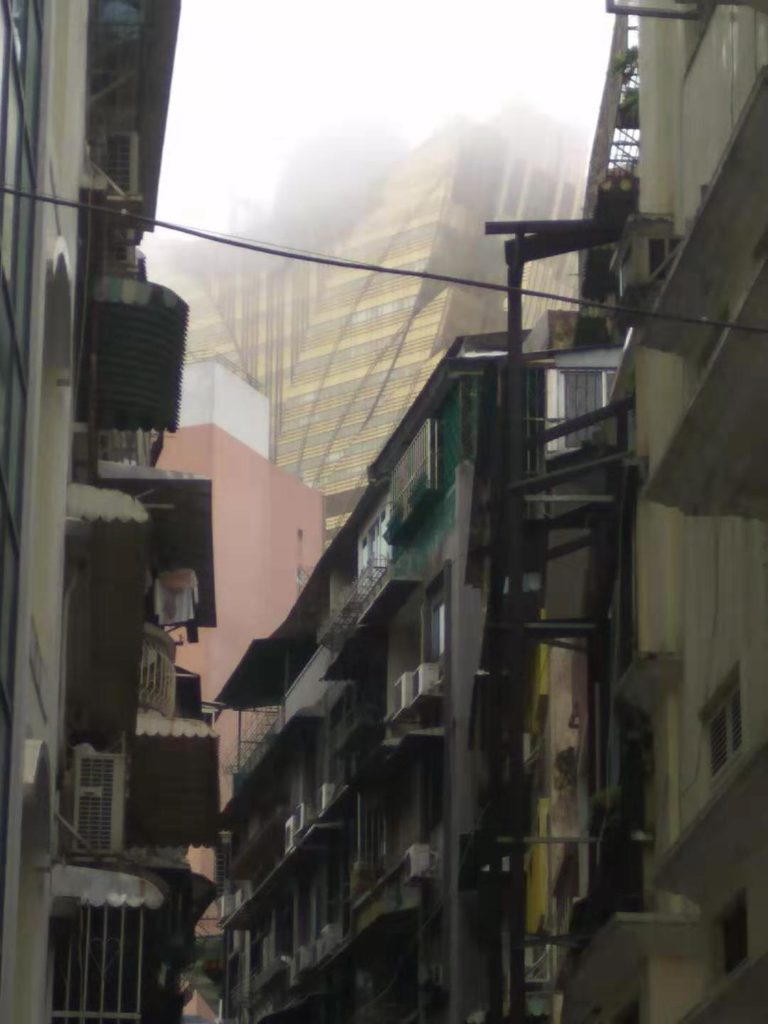
The Grand Lisboa looms over the old town in the gathering storm
Photos: Karen Killeen, Andrew Killeen

